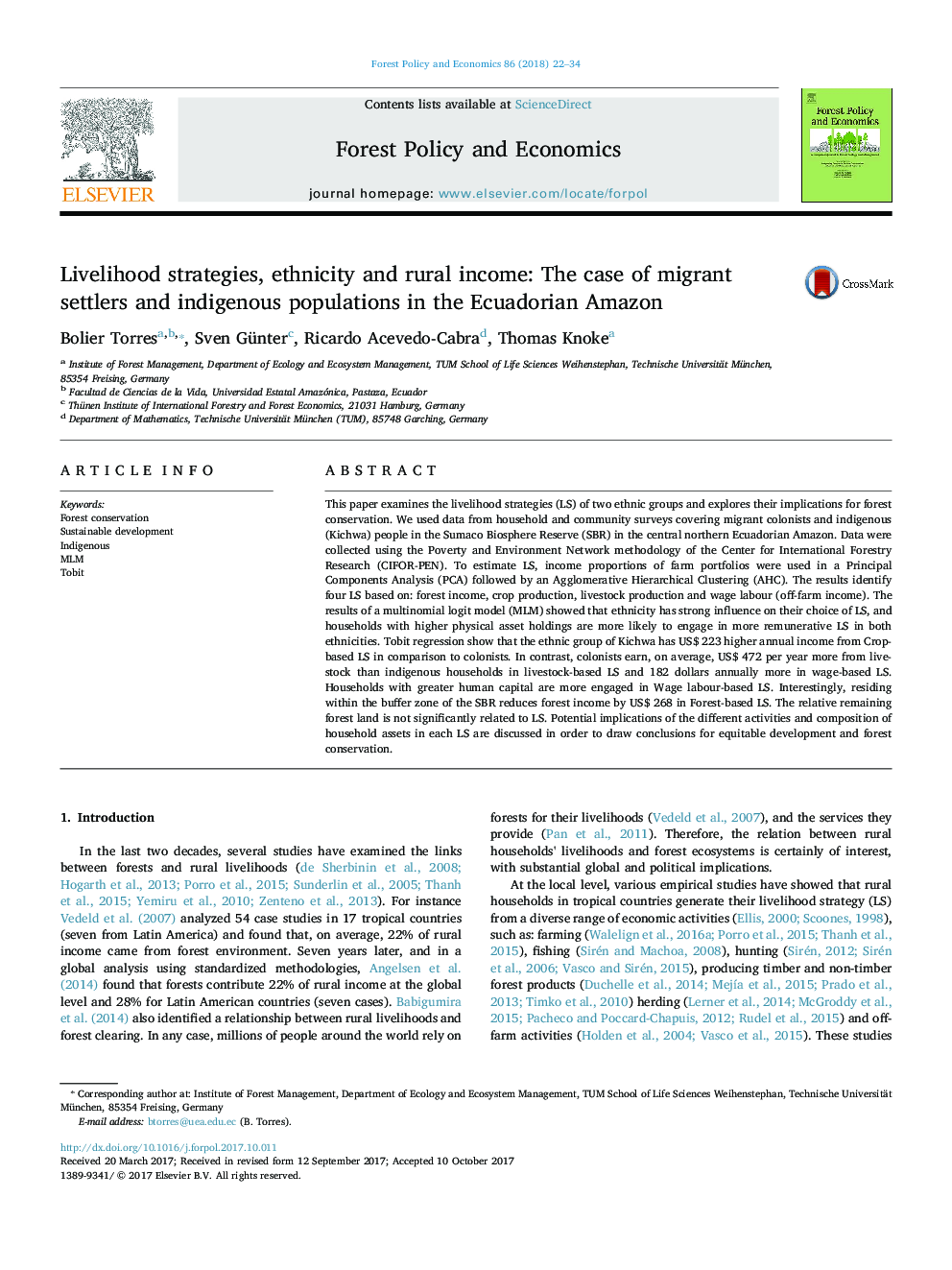| کد مقاله | کد نشریه | سال انتشار | مقاله انگلیسی | نسخه تمام متن |
|---|---|---|---|---|
| 6544829 | 1421652 | 2018 | 13 صفحه PDF | دانلود رایگان |
عنوان انگلیسی مقاله ISI
Livelihood strategies, ethnicity and rural income: The case of migrant settlers and indigenous populations in the Ecuadorian Amazon
ترجمه فارسی عنوان
استراتژی های معیشتی، قومیت و درآمد روستایی: مورد مهاجران مهاجر و جمعیت بومی در آمازون اکوادور
دانلود مقاله + سفارش ترجمه
دانلود مقاله ISI انگلیسی
رایگان برای ایرانیان
کلمات کلیدی
موضوعات مرتبط
علوم زیستی و بیوفناوری
علوم کشاورزی و بیولوژیک
جنگلداری
چکیده انگلیسی
This paper examines the livelihood strategies (LS) of two ethnic groups and explores their implications for forest conservation. We used data from household and community surveys covering migrant colonists and indigenous (Kichwa) people in the Sumaco Biosphere Reserve (SBR) in the central northern Ecuadorian Amazon. Data were collected using the Poverty and Environment Network methodology of the Center for International Forestry Research (CIFOR-PEN). To estimate LS, income proportions of farm portfolios were used in a Principal Components Analysis (PCA) followed by an Agglomerative Hierarchical Clustering (AHC). The results identify four LS based on: forest income, crop production, livestock production and wage labour (off-farm income). The results of a multinomial logit model (MLM) showed that ethnicity has strong influence on their choice of LS, and households with higher physical asset holdings are more likely to engage in more remunerative LS in both ethnicities. Tobit regression show that the ethnic group of Kichwa has US$ 223 higher annual income from Crop-based LS in comparison to colonists. In contrast, colonists earn, on average, US$ 472 per year more from livestock than indigenous households in livestock-based LS and 182 dollars annually more in wage-based LS. Households with greater human capital are more engaged in Wage labour-based LS. Interestingly, residing within the buffer zone of the SBR reduces forest income by US$ 268 in Forest-based LS. The relative remaining forest land is not significantly related to LS. Potential implications of the different activities and composition of household assets in each LS are discussed in order to draw conclusions for equitable development and forest conservation.
ناشر
Database: Elsevier - ScienceDirect (ساینس دایرکت)
Journal: Forest Policy and Economics - Volume 86, January 2018, Pages 22-34
Journal: Forest Policy and Economics - Volume 86, January 2018, Pages 22-34
نویسندگان
Bolier Torres, Sven Günter, Ricardo Acevedo-Cabra, Thomas Knoke,
